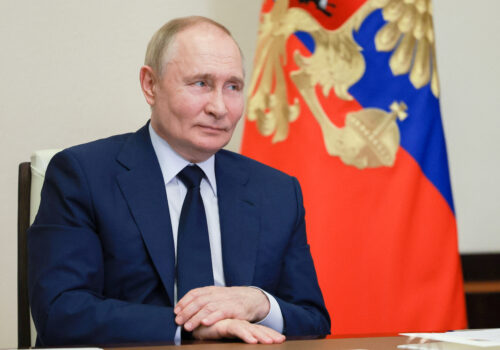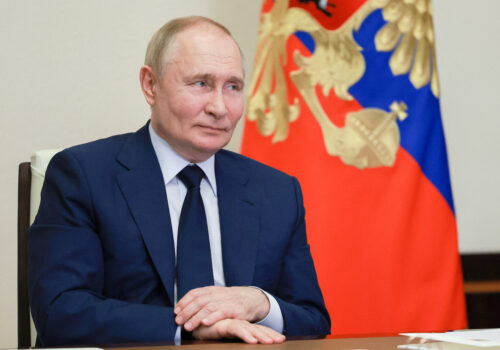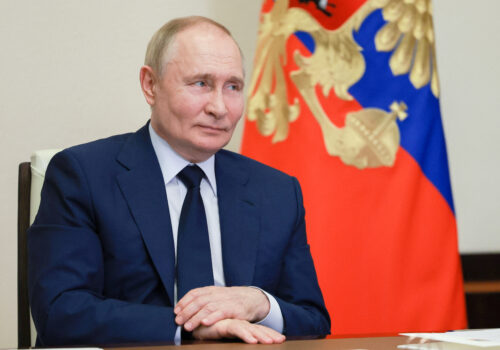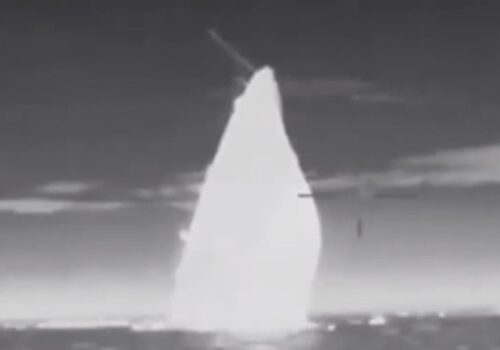
Europe can do more to help Ukraine counter Russia’s energy attacks

Russian bombing of Ukraine’s civilian energy infrastructure has forced millions of Ukrainians to spent the summer months adjusting to rolling power blackouts, with record high temperatures adding to the practical challenges of living without electricity. The Ukrainian response to this latest episode of wartime adversity has been marked by typical grit, resourcefulness, and good humor. Nevertheless, there is now widespread awareness that the country is facing what may be the toughest winter in modern Ukrainian history.
Since the start of Russia’s full-scale invasion in February 2022, Russia has destroyed, damaged, or occupied approximately eighty percent of Ukraine’s electricity infrastructure. The situation has deteriorated sharply since March 2024 following a wave of Russian attacks on Ukrainian power plants that have devastated the country’s thermal capacity.
Ukrainian energy sector officials believe that during the coming winter season, peak demand could be above eighteen gigawatts, with average consumption likely to hover around fifteen gigawatts. However, remaining capacity is just over ten gigawatts. Unless significant new sources can be secured, Ukrainians will have to deal with extended blackouts amid subzero temperatures. This could lead to a humanitarian catastrophe and create new waves of refugees fleeing to the EU.
Stay updated
As the world watches the Russian invasion of Ukraine unfold, UkraineAlert delivers the best Atlantic Council expert insight and analysis on Ukraine twice a week directly to your inbox.
Looking ahead, there is no substitute for much needed air defenses to protect Ukraine’s remaining energy production capacity. However, additional steps from the Ukrainian authorities and Kyiv’s partners could help prepare the country for the coming winter season.
A July 2024 report funded by Germany’s Federal Ministry for Education and Research has identified a number of short-term measures that could be adopted swiftly to at least partially plug current shortfalls. Fast repairs of thermal and hydro plants together with the deployment of small-scale gas-fired turbines and solar panels could bring approximately 3.4GW of additional capacity online before temperatures start to drop. Donations of spare equipment are also absolutely vital, while Ukraine should intensify work with partners to establish stockpiles of components to rebuild generation capacity.
One of the most promising initiatives would involve increasing cross-border capacity with neighboring EU countries operating under the umbrella of the European Network of Transmission System Operators for Electricity (ENTSO-E). Ukraine synchronized with the ENTSO-E grid in March 2022. Since then, Kyiv has increased cross-border capacity significantly, but there is still scope for a further expansion of interconnection capacity by approximately 0.3GW ahead of the coming winter season. This may be easier said than done, however.
Hungary and Slovakia are key exporters of electricity to Ukraine but are currently threatening to cut flows after Kyiv introduced a partial ban on the transit of Russian oil to refineries in the two EU countries. Budapest and Bratislava have long benefitted from cheap Russian energy imports and have faced accusations of acting in the Kremlin’s interests by blocking EU financial and military support to Ukraine. Both countries could now undermine efforts to boost energy exports to Ukraine.
Eurasia Center events
While there has not yet been any disruption to electricity flows from the EU into Ukraine, it is clearly in Kyiv’s interests to avoid disagreements where possible and to seek enhanced energy partnership with the country’s European neighbors. Closer cooperation with Slovakia and Romania in particular could pay major dividends. Indeed, recent research has found that transmission capacity could be more than doubled to five gigawatts. This could provide greater energy security, create jobs, and attract significant investments.
If completed, one existing power line project linking Slovakia and Ukraine could bring additional capacity of one gigawatt, enough to supply a million consumers. Work on this line began in 2013 and is seventy percent complete on the Ukrainian side, but nothing has yet been done on the Slovak side. Similarly, a proposed electricity power line linking Ukraine’s Pivdennoukrainska nuclear power plant to Romania would not only bring an additional one gigawatt of transfer capacity, but could also potentially end nearby Moldova’s dependence on electricity generated in the Kremlin-controlled Transnistria enclave.
Despite the numerous benefits offered by these projects, the Romanian and Slovakian governments remain unwilling to commit. This lack of political cooperation may contribute to a humanitarian crisis in Ukraine during the coming winter months that could spill over into neighboring countries. With the countdown to the cold season now already underway, there is no time to lose. Helping Ukraine to keep the lights on should be a priority for the whole of Europe.
Dr. Aura Sabadus is a senior energy journalist who writes about Eastern Europe, Turkey, and Ukraine for Independent Commodity Intelligence Services (ICIS), a London-based global energy and petrochemicals news and market data provider. Her views are her own.
Further reading
The views expressed in UkraineAlert are solely those of the authors and do not necessarily reflect the views of the Atlantic Council, its staff, or its supporters.

The Eurasia Center’s mission is to enhance transatlantic cooperation in promoting stability, democratic values and prosperity in Eurasia, from Eastern Europe and Turkey in the West to the Caucasus, Russia and Central Asia in the East.
Follow us on social media
and support our work
Image: (Photo by Ukrinform/NurPhoto)




